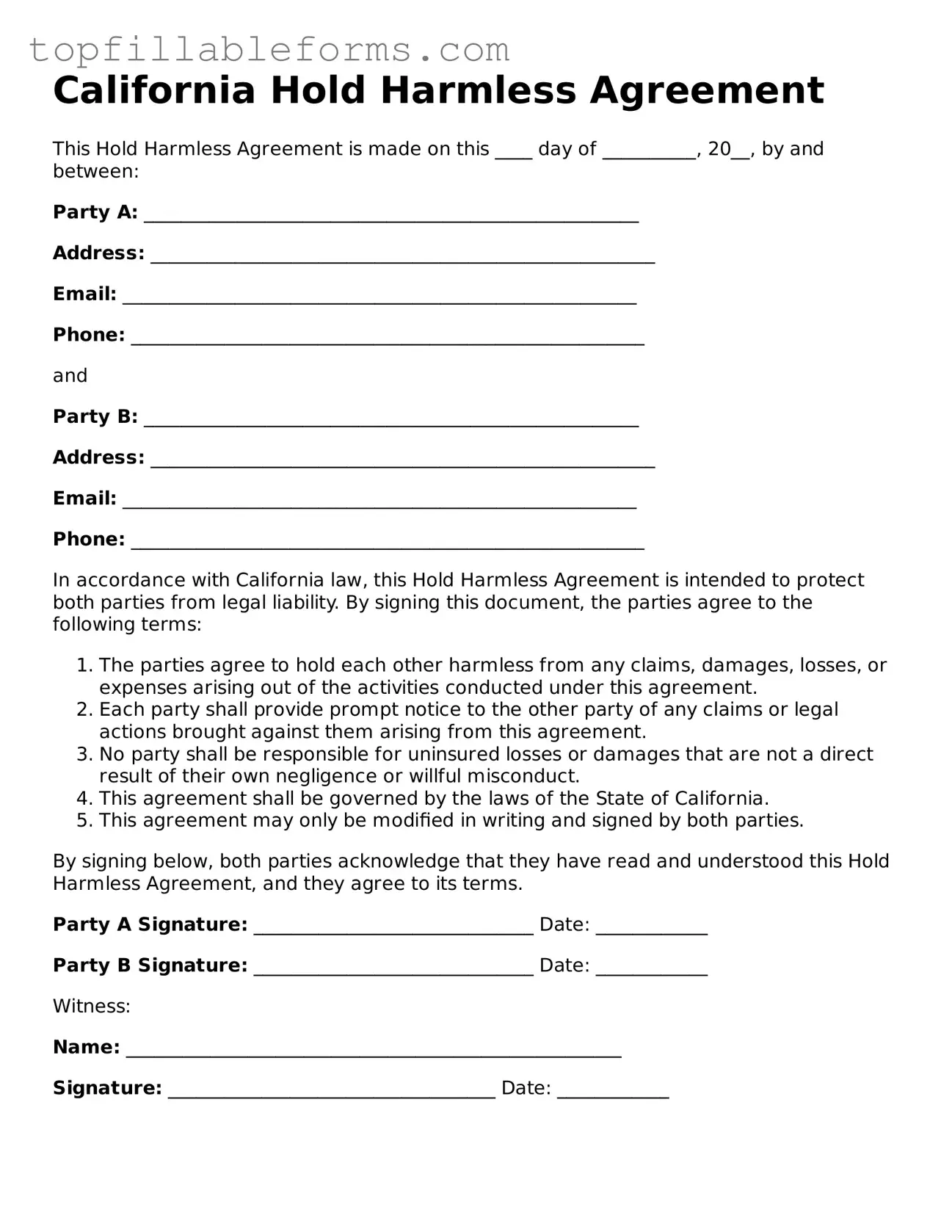California Hold Harmless Agreement
This Hold Harmless Agreement is made on this ____ day of __________, 20__, by and between:
Party A: _____________________________________________________
Address: ______________________________________________________
Email: _______________________________________________________
Phone: _______________________________________________________
and
Party B: _____________________________________________________
Address: ______________________________________________________
Email: _______________________________________________________
Phone: _______________________________________________________
In accordance with California law, this Hold Harmless Agreement is intended to protect both parties from legal liability. By signing this document, the parties agree to the following terms:
- The parties agree to hold each other harmless from any claims, damages, losses, or expenses arising out of the activities conducted under this agreement.
- Each party shall provide prompt notice to the other party of any claims or legal actions brought against them arising from this agreement.
- No party shall be responsible for uninsured losses or damages that are not a direct result of their own negligence or willful misconduct.
- This agreement shall be governed by the laws of the State of California.
- This agreement may only be modified in writing and signed by both parties.
By signing below, both parties acknowledge that they have read and understood this Hold Harmless Agreement, and they agree to its terms.
Party A Signature: ______________________________ Date: ____________
Party B Signature: ______________________________ Date: ____________
Witness:
Name: _____________________________________________________
Signature: ___________________________________ Date: ____________
